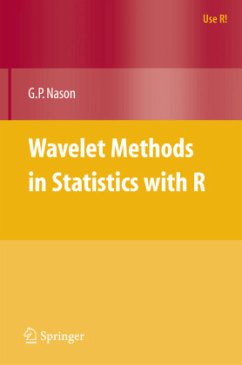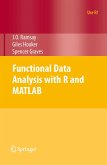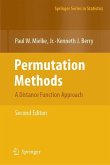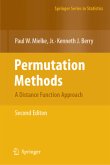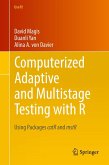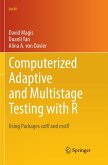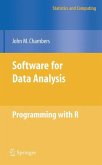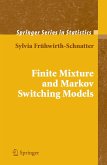Wavelet methods have recently undergone a rapid period of development with important implications for a number of disciplines including statistics. This book has three main objectives: (i) providing an introduction to wavelets and their uses in statistics; (ii) acting as a quick and broad reference to many developments in the area; (iii) interspersing R code that enables the reader to learn the methods, to carry out their own analyses, and further develop their own ideas. The book code is designed to work with the freeware R package WaveThresh4, but the book can be read independently of R.
The book introduces the wavelet transform by starting with the simple Haar wavelet transform, and then builds to consider more general wavelets, complex-valued wavelets, non-decimated transforms, multidimensional wavelets, multiple wavelets, wavelet packets, boundary handling, and initialization. Later chapters consider a variety of wavelet-based nonparametric regression methods fordifferent noise models and designs including density estimation, hazard rate estimation, and inverse problems; the use of wavelets for stationary and non-stationary time series analysis; and how wavelets might be used for variance estimation and intensity estimation for non-Gaussian sequences.
The book is aimed both at Masters/Ph.D. students in a numerate discipline (such as statistics, mathematics, economics, engineering, computer science, and physics) and postdoctoral researchers/users interested in statistical wavelet methods.
Guy Nason is Professor of Statistics at the University of Bristol. He has been actively involved in the development of various wavelet methods in statistics since 1993. He was awarded the Royal Statistical Society's 2001 Guy Medal in Bronze for work on wavelets in statistics. He was the author of the first, free, generally available wavelet package for statistical purposes in S and R (WaveThresh2).
The book introduces the wavelet transform by starting with the simple Haar wavelet transform, and then builds to consider more general wavelets, complex-valued wavelets, non-decimated transforms, multidimensional wavelets, multiple wavelets, wavelet packets, boundary handling, and initialization. Later chapters consider a variety of wavelet-based nonparametric regression methods fordifferent noise models and designs including density estimation, hazard rate estimation, and inverse problems; the use of wavelets for stationary and non-stationary time series analysis; and how wavelets might be used for variance estimation and intensity estimation for non-Gaussian sequences.
The book is aimed both at Masters/Ph.D. students in a numerate discipline (such as statistics, mathematics, economics, engineering, computer science, and physics) and postdoctoral researchers/users interested in statistical wavelet methods.
Guy Nason is Professor of Statistics at the University of Bristol. He has been actively involved in the development of various wavelet methods in statistics since 1993. He was awarded the Royal Statistical Society's 2001 Guy Medal in Bronze for work on wavelets in statistics. He was the author of the first, free, generally available wavelet package for statistical purposes in S and R (WaveThresh2).
From the reviews:
"This book is clearly written and well laid out.... This presentation successfully strikes a careful balance of keeping the presentation intuitive and straightforward, yet precise and accurate.... I am frequently asked by students or statistical researchers to recommend a book that would give them an introduction to wavelets....Wavelet Methods in Statistics with R strikes an excellent balance,... Paired with the R package that implements the methods discussed in the book, this book is a useful tool for not just gaining background in the field but also equipping the reader to apply these methods to their own data sets. It is a book I will heartily recommend to statisticians looking for an entry point into the field of wavelets." (Jeffrey S. Morris, Biometrics, June 2009, 65)
"The author provides the appropriate level of detail with which the novice reader can understand the background and theory underpinning wavelets together with allowing the reader to develop an appreciation of their associated advantages and disadvantages.
The author asks two pertinent questions: Why use wavelets? And Why use wavelets in statistics? For which he proceeds to provide answers; together with illustrative examples of the main uses of wavelets.
The text is interspersed with snippets of R code to illustrate the techniques presented and prove s the basis of an excellent text for private study. Reassuringly, for those readers merely interested in theoretical developments, the book can be read independently of the computer codes in R." (C.M. O'Brien, International Statistical Review, 2009, 77, 1)
"This book, written by the author of WaveThresh, an R package for wavelet analysis, could possibly be regarded as an expanded user's guide for that software, but it is so much more than that. This book starts from 'What is a Wavelet?' and goes through the fundamentals of wavelet analysis before covering an impressive variety of wavelet-based applications for the analysis of data, providing plenty of examples (and the R code for the example analyses) throughout. This book succeeds at preparing the reader to perform his/her own wavelet-based analyses on his/her own data, but along the way, the reader gains a nice foundation in wavelet analysis that will allow for exploration of new ideas in both application and methodology." (The American Statistician, May 2010, Vol. 64, No. 2)
"Nason provides R code throughout the text, and so enables readers to test their understanding by running the programs which they can then modify to handle their own data. ... One reason is the advanced nature of the mathematics, as anyone reading this book will soon discover. ... the book will be a useful introduction to the methods for the reasonably mathematically competent reader, and it should serve as a guide to some statistical applications." (R. Webster and R. M. Lark, Mathematical Geosciences, Vol. 43, 2011)
"Wavelet Methods in Statistics With R is a monograph in the UseR! series that is suitable for a wide range of data analysts including those with very little and with very much wavelet experience. ... We very strongly recommend the book to anyone using wavelets in R ... . In conclusion, this is a very welcome book." (Tom Burr and Claire Longo, Technometrics, Vol. 53 (2), May, 2011)
"This book is clearly written and well laid out.... This presentation successfully strikes a careful balance of keeping the presentation intuitive and straightforward, yet precise and accurate.... I am frequently asked by students or statistical researchers to recommend a book that would give them an introduction to wavelets....Wavelet Methods in Statistics with R strikes an excellent balance,... Paired with the R package that implements the methods discussed in the book, this book is a useful tool for not just gaining background in the field but also equipping the reader to apply these methods to their own data sets. It is a book I will heartily recommend to statisticians looking for an entry point into the field of wavelets." (Jeffrey S. Morris, Biometrics, June 2009, 65)
"The author provides the appropriate level of detail with which the novice reader can understand the background and theory underpinning wavelets together with allowing the reader to develop an appreciation of their associated advantages and disadvantages.
The author asks two pertinent questions: Why use wavelets? And Why use wavelets in statistics? For which he proceeds to provide answers; together with illustrative examples of the main uses of wavelets.
The text is interspersed with snippets of R code to illustrate the techniques presented and prove s the basis of an excellent text for private study. Reassuringly, for those readers merely interested in theoretical developments, the book can be read independently of the computer codes in R." (C.M. O'Brien, International Statistical Review, 2009, 77, 1)
"This book, written by the author of WaveThresh, an R package for wavelet analysis, could possibly be regarded as an expanded user's guide for that software, but it is so much more than that. This book starts from 'What is a Wavelet?' and goes through the fundamentals of wavelet analysis before covering an impressive variety of wavelet-based applications for the analysis of data, providing plenty of examples (and the R code for the example analyses) throughout. This book succeeds at preparing the reader to perform his/her own wavelet-based analyses on his/her own data, but along the way, the reader gains a nice foundation in wavelet analysis that will allow for exploration of new ideas in both application and methodology." (The American Statistician, May 2010, Vol. 64, No. 2)
"Nason provides R code throughout the text, and so enables readers to test their understanding by running the programs which they can then modify to handle their own data. ... One reason is the advanced nature of the mathematics, as anyone reading this book will soon discover. ... the book will be a useful introduction to the methods for the reasonably mathematically competent reader, and it should serve as a guide to some statistical applications." (R. Webster and R. M. Lark, Mathematical Geosciences, Vol. 43, 2011)
"Wavelet Methods in Statistics With R is a monograph in the UseR! series that is suitable for a wide range of data analysts including those with very little and with very much wavelet experience. ... We very strongly recommend the book to anyone using wavelets in R ... . In conclusion, this is a very welcome book." (Tom Burr and Claire Longo, Technometrics, Vol. 53 (2), May, 2011)

